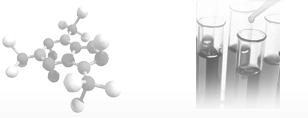|
It is used under corrosive circumstances, when long lasting resistance against corrosion is desired. Automotive industries and some other industries manufacturing outdoor products use this type of coating. It is suitable for outdoor and corrosive weather conditions. Coating quality and paint adhesion quality are better compared to iron phosphate coating. It forms a coating between 2-5 gr/m² on the metal when it is used as under paint. Zinc phosphate requires more treatment baths than iron phosphate. Its application, set-up and control are more difficult and expensive than other methods. It can be applied by immersion and spray. Zinc phosphates are used as trication, dication and monocation.
It is added into the phosphate baths as other cations in order to accelerate the coating form of nickel and manganese, develop the crystal forms and increase the performance.
Activation is used before zinc phosphate bath to minimize the phosphate crystals and to obtain a homogeneous zinc phosphate on the surfaces.
Zinc phosphates whose coating range is 6-20 gr/m² are used in cold forming and used as layer for greasing. Phosphatized metal is prepared for the next treatment with protective lubricants and soaps. For thick zinc phosphate, the coating thickness is 10-40 gr/m² . In thick zinc phosphate, protection against corrosion is provided by using protective lubricants.
Zinc phosphate baths are the baths producing sludge due to their working properties. The sludge gathered under the baths should be cleaned regularly. Zinc phosphate baths has to be backed up by seting up decantation systems. While designing zinc phosphate baths, their bottoms are to be cone shaped and the heating system should not be under the baths.
Zinc phosphate can be applied in two different ways: Immersion Zinc Phosphating and Spray Zinc Phosphating.
Immersion Zinc Phosphate; It is an application in which the proper use of the working parameters (such as heat, concentration, waiting time, ph and etc.) is very important. Immersion zinc phosphate process can be applied in four different methods:
1- Alkaline Degreasing Rinsing two times Zinc Phosphate Rinsing- Passivation
2- Alkaline Degreasing Rinsing two times Activation - Zinc Phosphate Rinsing- Passivation
3- Alkaline Degreasing Rinsing two times Acid bath Rinsing two times Activation Zinc phosphate Rinsing Passivation
4- Acid bath - Rinsing two times Alkaline Degreasing Bath Rinsing two times Activation Zinc Phosphate Rinsing Passivation
In zinc phosphate coatings, rinsings separating the alkalne baths and acidis baths should be kept clean and be refreshed frequently. Activation baths are ventilated and that plays an important role in obtaining surfaces with homogenous and proper crystal properties. The pieces kept in zinc phosphate baths for 5-10 min. are kept 30 sec - 1 min in passivation bath and then they are dried. Zinc phosphate bath can be just a single component according to its properties but it can also be as three components with ph adjuster and accelerators.
Spray Zinc Phosphate; It is an application directed by working parameters as in the parameters in immersion zinc phosphate baths. In this application, pressure-heat-concentration-waiting time-analysis specifications must be congruent. Generally, these two methods are used to move on.
1- Spray alkaline degreasing rinsing two times spray zinc phosphate rinsing passivation
2- Spray alkaline degreasing rinsing two times activation- spray zinc phosphate rinsing passivation
Surface treatment is applied at approximately 1,2-1,8 bar pressure. Application starts with degreasing the metal by spray alkaline degreasing bath. The piece which has been rinsed properly and activated in bath is treated at least 1,5 min. in zinc phosphate bath. The application ends with passivation and drying. The cone shaped zinc phosphate bath reduces the problems caused by phosphate sludge. The pieces exposed to corrosion can be cleaned in another place and then they can be phosphatized by spray zinc phoshating. A decantation unit must be set up, the sludge in zinc phosphate bath must be cleared of. |
